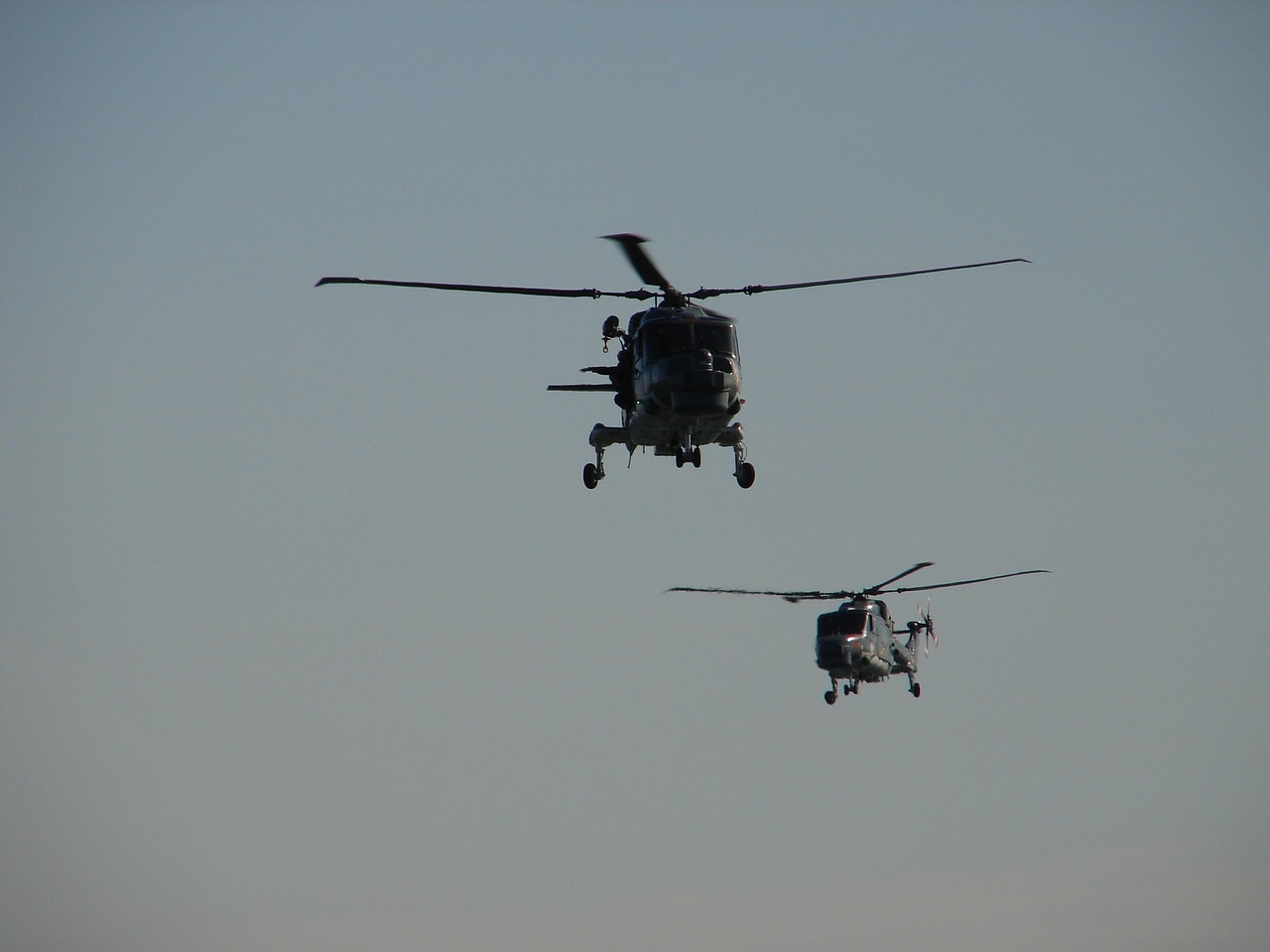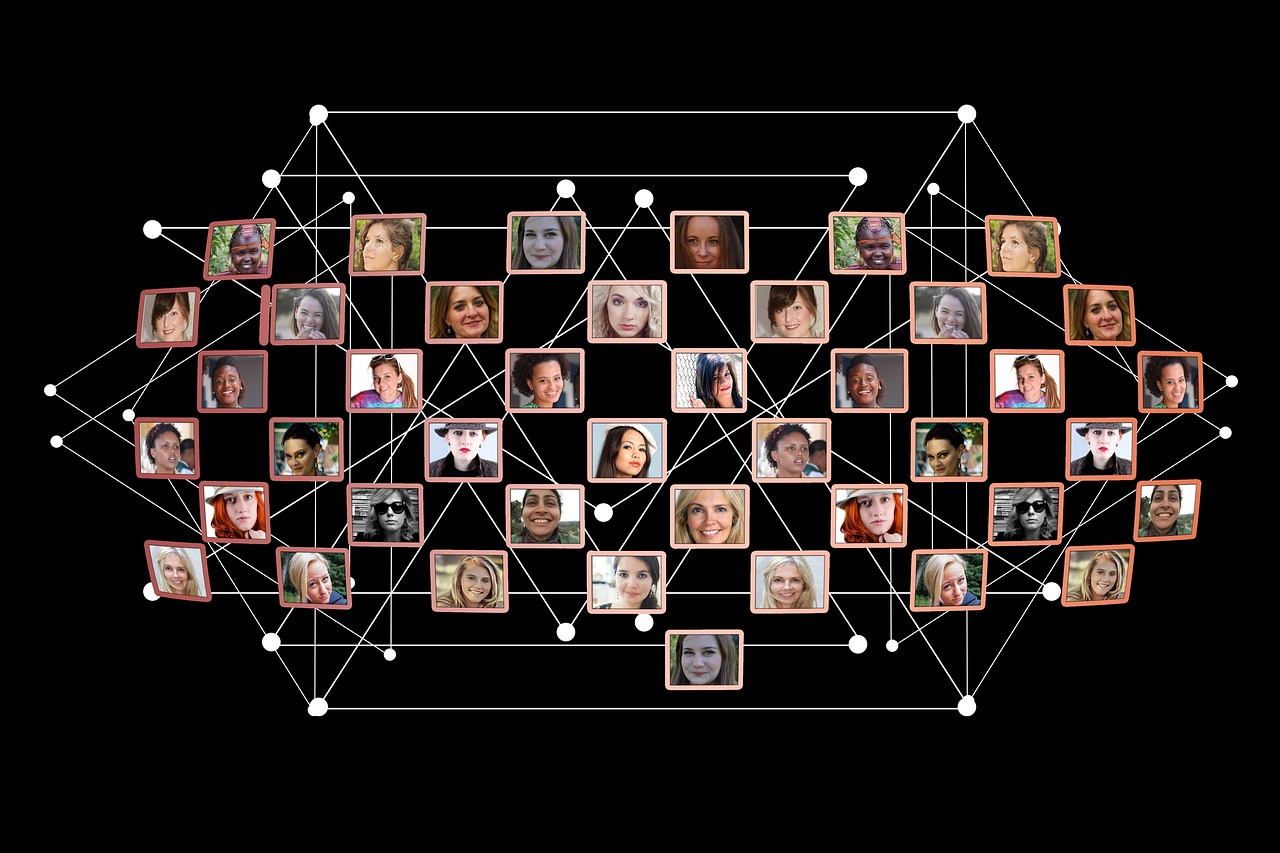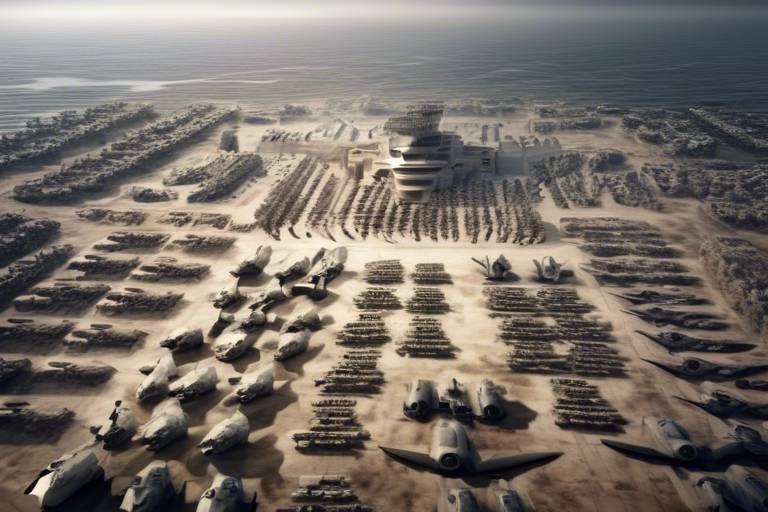How Advanced Defense Systems are Responding to Emerging Threats
In today's world, the landscape of global security is evolving at an unprecedented pace. With new threats emerging almost daily, it has become essential for defense systems to adapt and respond effectively. From cyber warfare to terrorism, the challenges facing nations are complex and multifaceted. This article dives deep into the latest advancements in defense technology and how they are strategically addressing these new and evolving threats. The integration of innovative systems, the development of cutting-edge strategies, and the importance of international cooperation are all crucial elements in this ongoing battle for security.
Understanding the nature of emerging threats is crucial for developing effective defense strategies. The modern battlefield is no longer confined to traditional warfare; it encompasses a variety of tactics that require a nuanced approach. Some of the most pressing threats include:
- Cyber Warfare: The rise of the digital age has opened new frontiers for conflict, where information is as valuable as ammunition.
- Terrorism: Traditional and non-traditional terrorist groups continue to pose significant risks, utilizing both physical and cyber means to achieve their goals.
- Hybrid Warfare: This involves a blend of conventional military tactics and irregular tactics, creating a complex battlefield that is hard to navigate.
As these threats evolve, so too must the strategies employed by defense systems worldwide. It is essential for nations to remain vigilant and adaptable in the face of such challenges.
The rapid pace of technological advancement is revolutionizing defense systems, enabling faster and more efficient responses to threats. Among the most notable innovations are:
Artificial Intelligence (AI) is at the forefront of transforming military operations. By enhancing decision-making processes, automating surveillance, and improving threat detection capabilities, AI is paving the way for more effective defense strategies. Imagine a battlefield where AI systems can analyze real-time data, predict enemy movements, and provide actionable insights to commanders. This level of efficiency can drastically change the outcome of military engagements.
AI-driven surveillance systems are utilizing advanced algorithms to sift through vast amounts of data. This not only provides real-time insights but also enhances the situational awareness of defense forces. The ability to monitor and analyze activities across multiple domains—from land to cyberspace—ensures that military leaders are always one step ahead of potential threats.
While the development of autonomous weapons systems offers significant advantages, it also raises ethical and strategic questions. These technologies can operate without human intervention, potentially changing the dynamics of warfare. The debate surrounding the use of such systems is ongoing, as nations grapple with the implications of delegating life-and-death decisions to machines.
As cyber threats grow increasingly sophisticated, defense systems must implement robust cybersecurity measures. Protecting critical infrastructure and sensitive information from malicious attacks is paramount. This involves not only advanced technology but also a comprehensive understanding of potential vulnerabilities. Organizations must remain proactive, continuously updating their defenses to counteract the ever-evolving tactics employed by cyber adversaries.
Global security challenges necessitate international collaboration. Nations must pool resources and intelligence to effectively counteract emerging threats. This can take many forms, including:
Joint military exercises among allied nations enhance interoperability. These exercises allow forces to practice coordinated responses to potential threats, improving overall readiness. By working together, countries can share knowledge and techniques that strengthen their collective defense capabilities.
Intelligence sharing agreements facilitate the exchange of crucial information between countries. This collaboration enables faster identification and response to emerging security threats. In an age where time is of the essence, the ability to share intelligence can mean the difference between thwarting an attack and suffering its consequences.
Looking ahead, the future of defense systems will likely involve increased integration of technology, greater emphasis on cyber capabilities, and a focus on adaptability. As threats continue to evolve, so too must the strategies employed by nations. The challenge lies in staying one step ahead, ensuring that defense systems are not only reactive but also proactive in their approach to security.
Q1: What are the main emerging threats to global security?
A1: The main emerging threats include cyber warfare, terrorism, and hybrid warfare, which combine traditional and non-traditional tactics.
Q2: How is AI being used in defense systems?
A2: AI enhances decision-making, automates surveillance, and improves threat detection capabilities, leading to more effective military operations.
Q3: Why is international collaboration important in defense?
A3: International collaboration allows nations to share resources and intelligence, improving their ability to respond to global security challenges effectively.
Q4: What ethical concerns are associated with autonomous weapons?
A4: The primary concerns revolve around the delegation of life-and-death decisions to machines, raising questions about accountability and moral implications.

Emerging Threats in Global Security
In today's rapidly evolving world, the nature of global security threats is changing at an unprecedented pace. As we navigate through the complexities of the 21st century, it has become increasingly clear that traditional defense strategies are no longer sufficient. The rise of cyber warfare, terrorism, and hybrid warfare are just a few examples of the multifaceted challenges that nations face. These threats are not only diverse but also interconnected, making it essential for defense systems to adapt swiftly and effectively.
Cyber warfare, for instance, poses a unique challenge. It transcends geographical boundaries, allowing malicious actors to launch attacks from anywhere in the world. This type of warfare can target critical infrastructure, such as power grids and financial systems, potentially causing widespread chaos. The anonymity provided by the internet complicates attribution, making it difficult for nations to respond appropriately. As a result, countries must invest in advanced cybersecurity measures to protect their assets and maintain national security.
On the other hand, terrorism continues to evolve, with extremist groups leveraging technology and social media to recruit and radicalize individuals. This new wave of terrorism is characterized by its decentralized nature, where small cells can operate independently while still being connected to a larger network. This makes it challenging for intelligence agencies to detect and prevent attacks before they occur. The need for robust intelligence-sharing frameworks among nations has never been more critical in combating this threat.
Hybrid warfare combines conventional military tactics with irregular tactics, such as cyber attacks and disinformation campaigns. This multifaceted approach blurs the lines between war and peace, making it difficult for countries to respond effectively. For example, a nation may face military aggression while simultaneously dealing with an influx of fake news aimed at undermining public trust. As such, a comprehensive understanding of these emerging threats is crucial for developing effective defense strategies.
| Type of Threat | Description | Key Characteristics |
|---|---|---|
| Cyber Warfare | Attacks on digital infrastructure | Global reach, anonymity, potential for large-scale disruption |
| Terrorism | Violent acts intended to intimidate | Decentralized networks, use of technology for recruitment |
| Hybrid Warfare | Combines conventional and unconventional tactics | Blurs lines between war and peace, includes disinformation |
In conclusion, understanding these emerging threats is not just an academic exercise; it is a matter of national survival. As the landscape of global security continues to shift, nations must remain vigilant and proactive in their defense strategies. This means embracing innovation, investing in technology, and fostering international cooperation to effectively tackle the challenges that lie ahead.
- What is cyber warfare? Cyber warfare involves attacks on digital infrastructure, often resulting in disruptions to critical services.
- How does terrorism evolve? Terrorism evolves through the use of technology and social media, leading to decentralized networks that are harder to track.
- What is hybrid warfare? Hybrid warfare is a strategy that blends conventional military tactics with irregular tactics, complicating responses from affected nations.

Technological Innovations in Defense
In today's rapidly evolving security landscape, technological innovations are not just enhancements; they are game-changers that redefine how nations prepare for and respond to threats. With the rise of complex challenges like cyber warfare and terrorism, defense systems are increasingly relying on cutting-edge technologies to ensure national security. From artificial intelligence to drone warfare, these advancements enable faster, smarter, and more efficient responses to potential dangers. Imagine a world where military operations are seamlessly integrated with advanced algorithms, allowing for real-time decision-making that can save lives and resources. This is not science fiction; it’s happening now.
One of the most significant breakthroughs in defense technology is the integration of artificial intelligence (AI). AI is revolutionizing military operations by enhancing decision-making processes, automating surveillance, and improving threat detection capabilities. For instance, AI can analyze vast amounts of data at lightning speed, identifying patterns and anomalies that would be nearly impossible for humans to detect. This capability not only increases efficiency but also significantly reduces the margin of error in critical situations. The implications are profound: more accurate targeting, quicker responses, and ultimately, a more effective defense strategy.
As we dive deeper into AI's role in defense, it's important to highlight the AI-driven surveillance systems that are becoming essential tools for military forces. These systems utilize advanced algorithms to sift through enormous datasets, providing real-time insights that enhance situational awareness. Imagine a military base where every movement is monitored, and any unusual activity is flagged instantly. This level of vigilance can deter potential threats and provide a strategic advantage in conflict situations.
Moreover, the development of autonomous weapons systems raises both excitement and ethical concerns. These technologies can operate without direct human intervention, potentially changing the dynamics of warfare. While they offer the promise of increased efficiency and reduced risk to human soldiers, they also pose critical questions about accountability and the moral implications of allowing machines to make life-and-death decisions. As nations continue to explore these technologies, a careful balance must be struck between innovation and ethical responsibility.
As the threats of cyber warfare escalate, defense systems are compelled to invest heavily in robust cybersecurity measures. Protecting critical infrastructure and sensitive information from malicious attacks has never been more crucial. This includes everything from securing military communication systems to safeguarding national databases. The stakes are high; a successful cyber attack could cripple a nation’s defense capabilities. Therefore, implementing advanced encryption methods, conducting regular security audits, and fostering a culture of vigilance are essential steps in fortifying defenses against cyber threats.
In conclusion, the landscape of defense technology is shifting dramatically, driven by the need to adapt to new forms of warfare and emerging threats. As we look to the future, the integration of these technological innovations will be pivotal in shaping effective defense strategies. Nations that embrace these advancements will not only enhance their security posture but also set the stage for a more stable global environment.
- What role does AI play in modern defense systems? AI enhances decision-making, automates surveillance, and improves threat detection, leading to more effective military operations.
- Are autonomous weapons systems safe? While they can increase efficiency, they raise ethical concerns regarding accountability and the potential for unintended consequences.
- How important is cybersecurity in defense? Cybersecurity is critical for protecting national infrastructure and sensitive information from increasing cyber threats.
- What future technologies are expected to impact defense? Expect greater integration of AI, advancements in drone technology, and enhanced cybersecurity measures as key trends in future defense systems.

Artificial Intelligence in Defense
The integration of Artificial Intelligence (AI) in defense systems is nothing short of revolutionary. Imagine a battlefield where decisions are made in seconds, not minutes, and where machines can process data at lightning speed to provide critical insights. This is the promise of AI in military operations. It enhances decision-making processes, automates surveillance, and significantly improves threat detection capabilities. The result? A more effective defense strategy that can adapt to the unpredictable nature of modern warfare.
One of the most exciting aspects of AI in defense is its ability to analyze vast amounts of data in real-time. Traditional methods of surveillance often involve human operators sifting through endless streams of information, which can lead to delays and missed opportunities. However, with AI-driven systems, algorithms can quickly identify patterns and anomalies, alerting defense forces to potential threats before they escalate. This real-time insight is crucial for maintaining situational awareness, especially in high-stakes environments.
Furthermore, the development of autonomous weapons systems has raised ethical and strategic questions. These systems, capable of operating without human intervention, could fundamentally change the dynamics of warfare. While they offer the potential for increased efficiency and reduced risk to human soldiers, they also pose significant challenges in terms of accountability and ethical considerations. For instance, who is responsible if an autonomous drone mistakenly targets civilians? As we embrace these technologies, it's essential to engage in a broader conversation about the implications of their use.
To illustrate the impact of AI on defense, consider the following table that summarizes key applications and their benefits:
| Application | Benefits |
|---|---|
| AI-Driven Surveillance | Real-time data analysis, enhanced situational awareness, faster threat detection |
| Autonomous Weapons | Reduced risk to personnel, increased operational efficiency |
| Predictive Maintenance | Improved equipment reliability, cost savings |
As we look towards the future, the role of AI in defense will only continue to expand. With advancements in machine learning and data analytics, we can expect even more sophisticated systems that not only enhance military capabilities but also ensure that our defense strategies are robust and adaptable. The question remains: how do we balance the benefits of these technologies with the ethical implications they carry? This ongoing dialogue will be crucial as we navigate the complexities of modern defense.
- What is the role of AI in modern defense systems? AI enhances decision-making, automates surveillance, and improves threat detection capabilities.
- Are autonomous weapons systems ethical? This is a complex issue that raises questions about accountability and the potential for misuse.
- How does AI improve situational awareness? AI analyzes vast amounts of data in real-time, providing insights that human operators might miss.
- What are the future implications of AI in defense? The future will likely see greater integration of AI, improved cyber capabilities, and a focus on adaptability in defense strategies.

AI-Driven Surveillance Systems
In today's rapidly evolving security landscape, are becoming the backbone of modern defense strategies. These systems utilize advanced algorithms and machine learning techniques to sift through vast amounts of data in real-time, providing defense forces with critical insights that were previously unimaginable. Imagine trying to find a needle in a haystack; now, picture having a super-powered magnet that not only finds that needle but also predicts where it will move next. That's the power of AI in surveillance!
One of the most impressive features of AI-driven surveillance is its ability to enhance situational awareness. By processing data from various sources, including satellite imagery, drones, and ground sensors, these systems can detect anomalies, track movements, and even identify potential threats before they escalate. This proactive approach is crucial in modern warfare, where the speed of information can mean the difference between success and failure.
Moreover, these systems can integrate with existing military technologies, creating a comprehensive defense network. For instance, when an AI system identifies an unusual activity in a certain area, it can automatically alert nearby units, allowing for a rapid response. This level of coordination not only improves efficiency but also significantly reduces the risk to human lives.
However, the implementation of AI-driven surveillance systems is not without its challenges. Ethical considerations come into play, especially regarding privacy and the potential for misuse. As we embrace these technologies, it is essential to strike a balance between national security and individual rights. The question arises: how do we ensure that these powerful tools are used responsibly? This ongoing debate will shape the future of surveillance and defense strategies.
In summary, AI-driven surveillance systems represent a significant leap forward in military capabilities. By harnessing the power of artificial intelligence, defense forces can achieve unparalleled levels of efficiency and effectiveness. As we continue to innovate and adapt to new threats, the integration of AI in surveillance will undoubtedly play a pivotal role in securing our nations.
- What are AI-driven surveillance systems? AI-driven surveillance systems use artificial intelligence to analyze data from various sources in real-time, enhancing situational awareness and threat detection.
- How do these systems improve military operations? They provide timely insights, automate threat identification, and enable faster response times, ultimately increasing operational efficiency.
- What are the ethical concerns surrounding AI surveillance? Key concerns include privacy issues and the potential for misuse of surveillance data, necessitating strict regulations and oversight.
- Can AI surveillance systems operate independently? While they can automate many processes, human oversight is crucial to ensure ethical use and decision-making in complex situations.

Autonomous Weapons Systems
Autonomous weapons systems represent a significant evolution in military technology, blending robotics, artificial intelligence, and advanced algorithms to create machines capable of making life-and-death decisions without human intervention. This leap forward in warfare technology brings both exciting possibilities and daunting ethical questions. Imagine a battlefield where drones and robots can identify and engage targets faster than human soldiers. While this could lead to increased efficiency and reduced casualties for friendly forces, it also raises concerns about accountability and the potential for unintended consequences.
One of the most pressing issues surrounding autonomous weapons is the ethical implications of allowing machines to make such critical decisions. Who is responsible if an autonomous weapon mistakenly targets civilians? The absence of human oversight could lead to scenarios where decisions are made based on algorithms rather than moral judgment. As military leaders and policymakers grapple with these questions, they must also consider the potential for an arms race in autonomous technology, where nations rush to develop the most advanced systems without fully understanding the ramifications.
Moreover, the integration of autonomous systems into military operations necessitates a thorough re-evaluation of existing laws of war. Current international humanitarian law is primarily designed with human actors in mind, making it challenging to apply these rules to machines. To address these challenges, experts advocate for a comprehensive framework that governs the use of autonomous weapons, ensuring that they operate within established ethical and legal boundaries.
Despite these concerns, the potential benefits of autonomous weapons systems cannot be overlooked. They can enhance operational efficiency by:
- Performing complex tasks in high-risk environments without endangering human lives.
- Providing real-time data analysis and threat assessment, enabling quicker responses to dynamic battlefield conditions.
- Reducing the cognitive load on human operators by handling repetitive or dangerous tasks.
As nations continue to invest in these technologies, the dialogue around autonomous weapons will likely intensify. It is essential for governments, military organizations, and civil society to engage in discussions about the future of warfare and the role of autonomous systems in maintaining global security. Balancing innovation with ethical considerations will be critical in shaping the future landscape of defense.
- What are autonomous weapons systems?
Autonomous weapons systems are military technologies that can operate independently, making decisions without human intervention, often utilizing artificial intelligence and robotics. - What are the ethical concerns surrounding autonomous weapons?
Ethical concerns include accountability for actions taken by machines, the potential for unintended casualties, and the challenge of applying existing laws of war to autonomous systems. - How could autonomous weapons change the nature of warfare?
They could lead to faster decision-making on the battlefield, reduce human casualties, but also raise the risk of an arms race and increase the likelihood of conflict escalation.

Cybersecurity Measures
As we plunge deeper into the digital age, the importance of cybersecurity measures cannot be overstated. With the rise of cyber threats, including hacking, data breaches, and ransomware attacks, defense systems must evolve to safeguard critical infrastructure and sensitive information. Imagine a world where a single cyber attack could disrupt entire nations, bringing economies to their knees. This is not just a possibility; it is a reality we face today. Therefore, implementing robust cybersecurity measures is essential for maintaining national security.
The first line of defense against these malicious attacks involves the deployment of advanced firewalls and intrusion detection systems. These technologies act as sentinels, monitoring network traffic for suspicious activities and potential threats. When a breach is detected, these systems can automatically respond, isolating affected areas and preventing further damage. However, technology alone is not enough. Organizations must also foster a culture of cybersecurity awareness among employees, ensuring that everyone understands their role in protecting sensitive data.
Moreover, regular security audits and penetration testing are vital components of a comprehensive cybersecurity strategy. These practices allow organizations to identify vulnerabilities before they can be exploited by malicious actors. By simulating attacks, businesses can assess their defenses and make necessary improvements. This proactive approach not only strengthens security but also builds resilience against future threats.
Another critical aspect of cybersecurity measures is the implementation of multi-factor authentication (MFA). This method requires users to provide multiple forms of verification before accessing sensitive systems, significantly reducing the chances of unauthorized access. In a world where passwords can be easily compromised, MFA serves as an additional barrier, making it much harder for cybercriminals to breach defenses.
Furthermore, organizations must prioritize the protection of their critical infrastructure, which includes everything from power grids to water supply systems. A successful cyber attack on these systems can have catastrophic consequences for public safety and national security. Therefore, governments and private sectors must collaborate to develop and implement stringent security protocols tailored to protect these vital assets.
In addition to technological solutions, fostering international cooperation is crucial in combating cyber threats. Cybercrime knows no borders, and as such, nations must work together to share intelligence and best practices. This collaboration can take various forms, including joint training exercises and information-sharing agreements, which enhance the collective ability to respond to cyber threats.
To summarize, the landscape of cybersecurity is ever-evolving, and defense systems must adapt accordingly. By investing in advanced technologies, promoting a culture of awareness, conducting regular audits, and fostering international collaboration, we can build a robust defense against the emerging threats that loom over our digital world.
- What are the most common cyber threats? The most common cyber threats include phishing attacks, ransomware, malware, and denial-of-service (DoS) attacks.
- How can organizations improve their cybersecurity posture? Organizations can improve their cybersecurity posture by implementing strong password policies, conducting regular training for employees, and utilizing advanced security technologies.
- Why is international cooperation important in cybersecurity? International cooperation is essential because cyber threats often transcend borders, and sharing intelligence can enhance the effectiveness of defensive measures.
- What role does employee training play in cybersecurity? Employee training is crucial as it helps individuals recognize potential threats and understand their responsibilities in maintaining security.

International Collaboration in Defense
In an increasingly interconnected world, the concept of has never been more vital. As emerging threats evolve and become more sophisticated, no single nation can effectively tackle these challenges alone. This realization has led to a surge in cooperative efforts among countries, pooling resources, intelligence, and technology to create a more robust defense posture.
One of the most significant aspects of this collaboration is the establishment of joint military exercises. These exercises serve as a platform for allied nations to practice coordinated responses to potential threats. Imagine a scenario where multiple countries must respond to a sudden crisis—having previously trained together allows for seamless integration of forces. For example, during NATO exercises, troops from various member nations engage in realistic simulations that test their readiness and interoperability. This not only enhances military effectiveness but also fosters a sense of camaraderie among participating forces.
Moreover, intelligence sharing agreements have become a cornerstone of international defense collaboration. These agreements facilitate the exchange of crucial information between countries, allowing them to identify and respond to emerging security threats more swiftly. When one nation detects a potential cyber threat, for instance, sharing that information with allies can lead to a collective response that mitigates risks across borders. This interconnectedness is akin to a neighborhood watch, where everyone keeps an eye out for suspicious activity, enhancing security for all.
It's important to note that the success of these collaborations hinges on trust and transparency. Nations must be willing to share sensitive information and cooperate fully, which can sometimes be challenging due to political considerations. However, the benefits of collaboration far outweigh the risks, as evidenced by successful operations in recent history. For instance, the coalition forces in the fight against ISIS demonstrated how effective international collaboration can be in addressing a common enemy.
Looking towards the future, we can expect to see even greater emphasis on international collaboration in defense. As threats become more complex, nations will need to develop innovative strategies that not only address current challenges but also anticipate future ones. This will likely involve the integration of advanced technologies and frameworks that allow for real-time communication and rapid response capabilities among allied forces.
In conclusion, the landscape of global security is continually shifting, and the need for international collaboration in defense is paramount. By working together, nations can enhance their collective security and ensure a safer world for future generations. As we navigate these challenges, it is crucial to remember that unity is strength, and together, we can face any threat that comes our way.
- Why is international collaboration necessary in defense?
International collaboration is essential because emerging threats, such as cyber warfare and terrorism, are often transnational in nature. By working together, countries can share resources and intelligence to effectively combat these challenges. - What are joint military exercises?
Joint military exercises are training operations conducted by allied nations to enhance interoperability and readiness. They simulate real-world scenarios, allowing forces to practice coordinated responses to potential threats. - How do intelligence sharing agreements work?
Intelligence sharing agreements facilitate the exchange of information between countries. This collaboration allows nations to quickly identify and respond to security threats, enhancing overall defense capabilities.

Joint Military Exercises
Joint military exercises have become a cornerstone of modern defense strategies, providing an essential platform for allied nations to enhance their operational capabilities. These exercises are not just about showcasing military might; they are a vital tool for fostering interoperability among forces from different countries. Imagine a well-rehearsed orchestra, where every musician knows their part and can respond to the conductor's cues seamlessly. That's the kind of coordination joint exercises aim to achieve among military forces.
These collaborative drills allow participating nations to practice coordinated responses to a variety of potential threats, ranging from conventional warfare to humanitarian crises. For instance, during a recent joint exercise in the Pacific, forces from the United States, Japan, and Australia simulated a multi-faceted response to a natural disaster, showcasing their ability to work together under pressure. This type of training not only improves readiness but also builds trust and camaraderie between different military units.
Moreover, joint military exercises often incorporate advanced technology, such as simulated battlefield environments and real-time data sharing, which enhances the training experience. The use of virtual reality and artificial intelligence in these exercises allows troops to engage in realistic scenarios without the risks associated with live training. This innovative approach ensures that military personnel are well-prepared for any eventuality they might face in real-world situations.
To illustrate the impact of joint military exercises, consider the following table that highlights some of the key benefits:
| Benefit | Description |
|---|---|
| Enhanced Interoperability | Improves communication and coordination between allied forces. |
| Increased Readiness | Prepares troops for rapid deployment in crisis situations. |
| Shared Best Practices | Facilitates the exchange of tactics and strategies among nations. |
| Strengthened Alliances | Builds trust and cooperation between military forces. |
In conclusion, joint military exercises are more than just a display of power; they are a crucial element in the global defense landscape. As threats become increasingly complex and multifaceted, the ability to respond swiftly and effectively hinges on the relationships forged through these collaborative efforts. By continuing to engage in joint exercises, nations can ensure they are not only prepared for the challenges of today but are also equipped to tackle the uncertainties of tomorrow.
- What are joint military exercises? Joint military exercises are training operations conducted by allied nations to improve coordination, readiness, and response capabilities.
- Why are joint military exercises important? They enhance interoperability among forces, prepare troops for various scenarios, and strengthen international alliances.
- How often do these exercises occur? The frequency of joint military exercises varies, but many nations conduct them annually or biannually.
- What types of scenarios are practiced in these exercises? Scenarios can range from conventional warfare to disaster response and humanitarian missions.

Intelligence Sharing Agreements
In today's interconnected world, play a pivotal role in enhancing global security. These agreements facilitate the exchange of vital information among nations, allowing them to stay one step ahead of emerging threats. Imagine a vast network of countries, each with its own unique intelligence capabilities, coming together to create a formidable defense against common adversaries. This collaboration not only strengthens individual nations but also fortifies the collective security landscape.
One of the key benefits of intelligence sharing is the ability to rapidly identify and respond to threats. For instance, if one country detects unusual cyber activity, it can quickly share this information with its allies. This allows other nations to bolster their defenses and take preemptive measures. In a world where time is of the essence, such swift communication can mean the difference between thwarting an attack and suffering significant consequences.
Moreover, intelligence sharing agreements often lead to enhanced situational awareness. By pooling resources and expertise, countries can create a more comprehensive understanding of the global threat environment. This collaboration is particularly crucial in combating terrorism, where the flow of information can help track and dismantle networks before they can execute their plans. The ability to connect the dots across borders is invaluable in today’s complex security landscape.
However, establishing these agreements is not without its challenges. Issues such as trust, data protection, and differing legal frameworks can complicate the sharing process. Countries must navigate these hurdles carefully to ensure that sensitive information is protected while still allowing for effective collaboration. To address these concerns, many nations are developing standardized protocols and frameworks that facilitate smoother information exchange.
In conclusion, intelligence sharing agreements are a cornerstone of modern defense strategies. They enable nations to collaborate effectively and enhance their collective security posture. As the global landscape continues to evolve, the importance of these agreements will only grow, ensuring that countries are better equipped to face emerging threats together.
- What are intelligence sharing agreements?
These are formal arrangements between countries to exchange vital intelligence information to enhance national and global security. - Why are intelligence sharing agreements important?
They enable nations to quickly identify and respond to threats, improving overall situational awareness and defense capabilities. - What challenges do countries face in establishing these agreements?
Trust issues, data protection concerns, and differing legal frameworks can complicate the sharing process. - How can countries improve intelligence sharing?
By developing standardized protocols and frameworks, nations can facilitate smoother and more effective information exchange.

The Future of Defense Systems
As we gaze into the horizon of military advancements, it’s clear that the future of defense systems is poised for a transformation unlike anything we've seen before. Imagine a world where technology and strategy intertwine seamlessly, creating an impenetrable shield against emerging threats. This isn’t just a dream; it’s the trajectory we're on, driven by a relentless pursuit of innovation and adaptability.
One of the most striking features of future defense systems will be the increased integration of technology. Picture this: artificial intelligence, machine learning, and advanced robotics working in concert to enhance operational efficiency. These technologies will not only streamline decision-making processes but will also empower defense forces to respond to threats with unprecedented speed and precision. The battlefield of tomorrow will be characterized by real-time data analysis and automated systems that can predict and neutralize threats before they even materialize.
Moreover, the emphasis on cyber capabilities will be paramount. As cyber warfare becomes more sophisticated, defense systems must evolve to protect critical infrastructure and sensitive information. Future strategies will likely incorporate quantum computing to bolster cybersecurity measures, making it nearly impossible for adversaries to breach defenses. This shift will not only safeguard national security but also enhance the resilience of interconnected systems across the globe.
Adaptability will also be a key feature of future defense systems. In a world where threats are constantly evolving, the ability to pivot and adjust strategies will be crucial. Defense forces will need to adopt a mindset of continuous improvement, where lessons learned from past conflicts inform future operations. This dynamic approach will ensure that military strategies remain relevant and effective, no matter what challenges arise.
Furthermore, as we delve deeper into the future, we will likely witness a rise in collaborative defense initiatives among nations. The complexities of global security demand that countries work together, sharing resources and intelligence to create a united front against common threats. Joint military exercises and intelligence-sharing agreements will become more prevalent, fostering a spirit of cooperation that enhances overall security.
In conclusion, the future of defense systems promises to be a thrilling blend of technology, strategy, and collaboration. As we navigate this uncharted territory, one thing is certain: the innovations on the horizon will redefine how nations protect themselves and respond to threats, ensuring a safer world for generations to come.
- What role will AI play in future defense systems?
AI will enhance decision-making, automate surveillance, and improve threat detection, making military operations more efficient. - How will cybersecurity evolve in defense?
Cybersecurity will focus on advanced technologies like quantum computing to protect against increasingly sophisticated cyber threats. - Will international collaboration increase?
Yes, collaborative initiatives will be crucial as nations work together to address shared security challenges. - What is the importance of adaptability in defense?
Adaptability ensures that defense strategies remain effective in the face of constantly evolving threats.
Frequently Asked Questions
- What are the main emerging threats in global security?
The main emerging threats include cyber warfare, terrorism, and hybrid warfare. These threats are constantly evolving, making it essential for defense strategies to adapt quickly to new challenges.
- How is artificial intelligence changing military operations?
Artificial intelligence is revolutionizing military operations by enhancing decision-making processes, automating surveillance, and improving threat detection capabilities. This leads to more efficient and effective defense strategies.
- What role do autonomous weapons systems play in modern warfare?
Autonomous weapons systems can operate without human intervention, which raises significant ethical and strategic questions. Their use can change the dynamics of warfare by allowing for faster responses but also poses risks of unintended consequences.
- How are defense systems protecting against cyber threats?
Defense systems are implementing robust cybersecurity measures to safeguard critical infrastructure and sensitive information from malicious attacks. This includes advanced firewalls, encryption, and continuous monitoring for vulnerabilities.
- Why is international collaboration important in defense?
International collaboration is crucial because global security challenges often transcend national borders. By pooling resources and intelligence, countries can more effectively counteract emerging threats and enhance overall security.
- What are joint military exercises?
Joint military exercises are coordinated training activities between allied nations. They enhance interoperability and readiness, allowing forces to practice coordinated responses to potential threats in a controlled environment.
- What are intelligence sharing agreements?
Intelligence sharing agreements are formal arrangements between countries to exchange critical information. These agreements facilitate faster identification and response to emerging security threats, improving overall situational awareness.
- What does the future of defense systems look like?
The future of defense systems is likely to involve increased integration of technology, a greater emphasis on cyber capabilities, and a focus on adaptability to efficiently counter evolving threats.



















